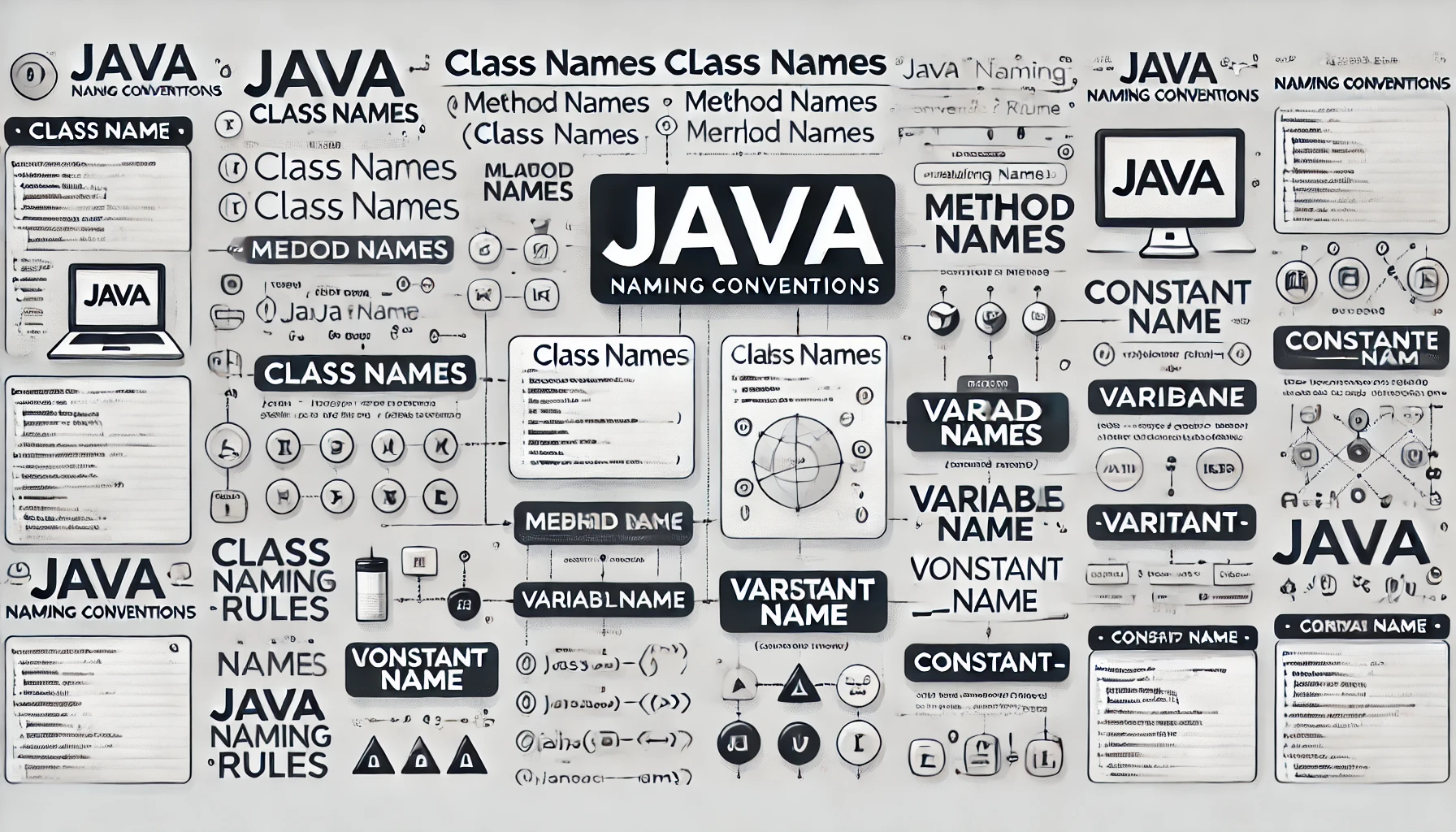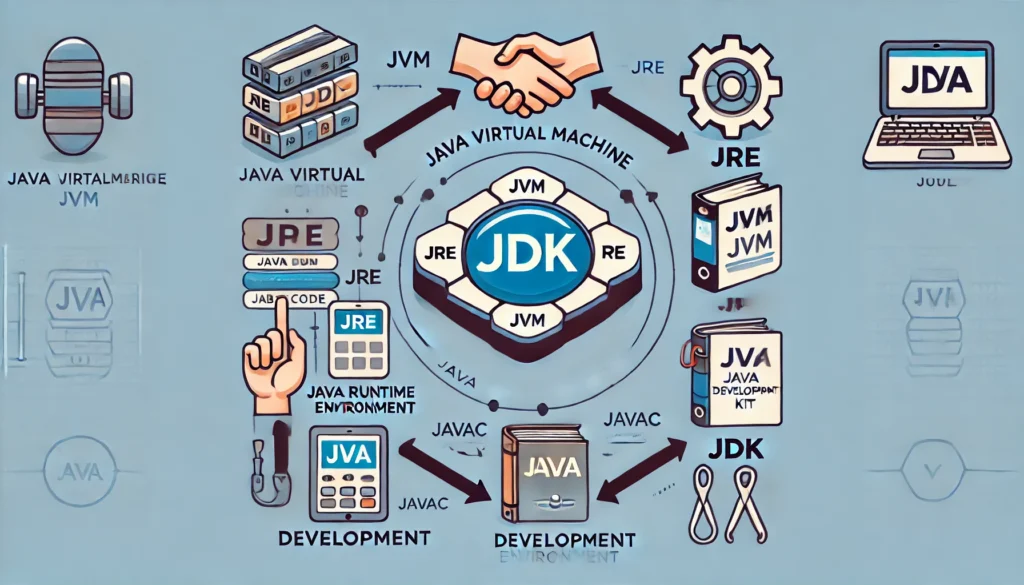
Overview
Java is one of the most popular programming languages in the world, and its success owes much to its consistency and readability. A key part of achieving this consistency is following standard Java naming conventions rules. These conventions aren’t enforced by the compiler, but they are highly recommended for writing clean, maintainable code that adheres to industry standards. Whether you’re working on a small project or a large-scale enterprise system, using Java’s naming rules ensures that your code is more readable and easier to manage.
This article explores the fundamental naming conventions in Java, explaining why they matter and offering best practices for different components of the language. We’ll cover everything from class names to variable names, providing practical examples along the way.
Table of Contents
Why Are Java Naming Conventions Rules Important?
Java naming conventions rules serve multiple purposes, from improving the readability of code to enabling collaboration across teams. Following these rules also helps with code maintenance since it’s easier to identify the purpose and usage of different components just by looking at their names.
Some of the key benefits of adhering to naming conventions include:
- Readability: Other developers (or even you) can easily understand what your code does.
- Consistency: Code looks professional and adheres to industry norms, making it easier to follow.
- Maintenance: It becomes easier to troubleshoot and enhance the code as needed.
- Collaboration: Teams can work more efficiently when everyone follows the same guidelines.
In short, naming conventions enhance the quality and clarity of your Java code, leading to fewer mistakes and faster development cycles.
Java Naming Conventions Rules Overview
Java naming conventions rules apply to various elements within the language. These elements include:
- Classes
- Interfaces
- Packages
- Methods
- Variables
- Constants
- Enums
- Type Parameters
- Annotations
- Files
Each of these components follows specific naming rules to maintain consistency and clarity across different Java applications.
1. Class Naming Conventions
Classes are the fundamental building blocks in Java. When naming a class, the name should clearly reflect its function or purpose.
Rules:
- Class names should always start with a capital letter.
- Use CamelCase, meaning each word in the name begins with a capital letter (e.g.,
Person,StudentRecord). - Names should be nouns, as they represent objects or concepts.
Example:
public class EmployeeDetails {
// Code related to Employee Details
}In this example, the class name EmployeeDetails clearly conveys its purpose, and the use of CamelCase adheres to the standard convention.
2. Interface Naming Conventions
Interfaces define a contract of methods that a class must implement. Naming an interface should similarly follow specific conventions to ensure consistency.
Rules:
- Interface names should start with an uppercase letter and follow the CamelCase convention.
- The name should describe a capability or role.
- Common practice is to name interfaces as adjectives (e.g.,
Runnable,Serializable).
Example:
public interface Printable {
void print();
}In this example, Printable is a clear, descriptive name that conveys the capability the interface provides.
3. Package Naming Conventions
Packages in Java group related classes and interfaces. A package name usually represents a company domain or project structure and is written in lowercase.
Rules:
- Use all lowercase letters.
- Use dot notation to separate logical groups (e.g.,
com.company.project). - Names should be unique to avoid conflicts with other packages.
Example:
package com.javatecharc.hazelcast;
Here, com.javatecharc.hazelcast could represent the HR-related functionality of a company’s software.
4. Method Naming Conventions
Methods perform actions in Java, so their names should be descriptive of the task they perform. These names typically start with a verb.
Rules:
- Method names should start with a lowercase letter and use CamelCase for multiple words.
- Names should be verbs, as they describe actions or behaviors.
Example:
public void calculateSalary() {
// Method to calculate employee salary
}In this example, calculateSalary() clearly indicates the action the method performs.
5. Variable Naming Conventions
Variables store data values in Java. Naming variables properly makes code easier to read and understand.
Rules:
- Variable names should start with a lowercase letter and use CamelCase for multiple words.
- Names should be meaningful and self-explanatory.
Example:
int employeeAge = 30;In this case, employeeAge is a clear, descriptive name that indicates the purpose of the variable.
6. Constant Naming Conventions
Constants are variables whose values cannot be changed once assigned. They are typically used for configuration values or fixed data.
Rules:
- Constant names should be written in all uppercase letters.
- Use underscores to separate words in the name (e.g.,
MAX_SPEED).
Example:
public static final int MAX_AGE = 65;Here, MAX_AGE follows the standard naming convention for constants and clearly indicates its purpose.
7. Enum Naming Conventions
Enums represent a fixed set of constants. Like classes and interfaces, enums should follow clear naming guidelines.
Rules:
- Enum names should follow the same rules as class names.
- Enum constants should be written in uppercase letters.
Example:
public enum DayOfWeek {
MONDAY, TUESDAY, WEDNESDAY, THURSDAY, FRIDAY;
}In this example, DayOfWeek is a descriptive name for the enum, and the constants are written in uppercase.
8. Type Parameter Java Naming Conventions Rules
In Java, type parameters are placeholders for the actual types you specify when using generics. Naming them correctly makes your code more intuitive.
Rules:
- Use single uppercase letters for generic type parameters.
- Common names include
T(Type),E(Element),K(Key), andV(Value).
Example:
public class Box<T> {
private T item;
}Here, T stands for the type that will be passed to the Box class when it’s used.
9. Annotation Naming Conventions
Annotations in Java provide metadata about the code. When creating custom annotations, follow these conventions for clarity.
Rules:
- Annotation names should start with a capital letter.
- Use CamelCase for multiple words, similar to classes and interfaces.
Example:
public @interface CustomAnnotation {
String value();
}CustomAnnotation is a clear name for an annotation and follows the standard naming guidelines.
10. File Naming Conventions
Java file names should match the name of the public class or interface defined within them.
Rules:
- The file name should exactly match the class or interface name, including the case.
- File extensions should always be .java.
Example: If the class is named EmployeeDetails, the file name should be EmployeeDetails.java.
Conclusion
Java naming conventions rules might seem like minor details, but they play a critical role in writing clean, readable, and maintainable code. By following these guidelines, you ensure that your code is easier to understand, debug, and extend. Whether you are a beginner or an experienced developer, sticking to these conventions will make your Java code more professional and team-friendly. Remember, naming is the first impression of your code—make it count!
Happy Learning! 😊
Also explore about:




